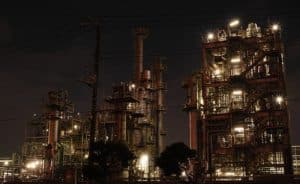Backup Power for High-Performance Buildings
 To understand why backup power is essential for high-performance buildings, it can be helpful to understand what makes a building be considered “high-performance.” According to Consulting-Specifying Engineer, a high-performance building “integrates and optimizes, on a lifecycle basis, all major high-performance building attributes, which include energy-conservation, environment, safety, security, durability, accessibility, cost-benefit, productivity, sustainability, functionality, and operational considerations.” Examples of high-performance buildings include airports, factories, schools and hospitals; for these buildings, backup power is necessary to guarantee the health and safety of building occupants as well as for the success of mission-critical applications.
To understand why backup power is essential for high-performance buildings, it can be helpful to understand what makes a building be considered “high-performance.” According to Consulting-Specifying Engineer, a high-performance building “integrates and optimizes, on a lifecycle basis, all major high-performance building attributes, which include energy-conservation, environment, safety, security, durability, accessibility, cost-benefit, productivity, sustainability, functionality, and operational considerations.” Examples of high-performance buildings include airports, factories, schools and hospitals; for these buildings, backup power is necessary to guarantee the health and safety of building occupants as well as for the success of mission-critical applications.
Emergency Power Basics for High-Performance Buildings
As it turns out, high-performance buildings’ backup power needs are not very different from other, standard types of buildings with similar functions. Emergency power must be able to be provided onsite to keep essential safety elements (such as exit signs, fire alarm systems and lighting) functioning in case a main power source is lost. In some cases, such as in hospitals and medical settings, lives may be on the line when a main source of power fails. This level of dire need for power at all times makes the following basics of backup power systems essential for high-performance buildings:
- Backup Generators: On-site power generation is a must for high-performance buildings. With power outages affecting more and more people due to the country’s aging infrastructure as well as other factors, generators may be needed at any given time to provide the power necessary to keep mandatory functions running.
- Inspections & Maintenance: In order to ensure backup power systems will run properly when needed, regular inspections and maintenance must be completed. Inspections include checking and testing components of backup power systems like batteries which are vital parts of any emergency power system and also the most common cause of failure for these systems. All building owners should familiarize themselves with official regulations in regards to how often specific emergency systems need to be tested.
- Parallel Systems: Running generators in parallel is a great way for high-performance buildings to add extra redundancy and reliability to backup power systems. Paralleling generators adds extra protection against power loss and offers a more efficient way for buildings to have greater control over the amount of power able to be produced at any given time.
By designing backup power systems with redundancy, efficiency and expandability in mind, high-performance buildings can be sure to maintain the necessary levels of power for success at any given time.

